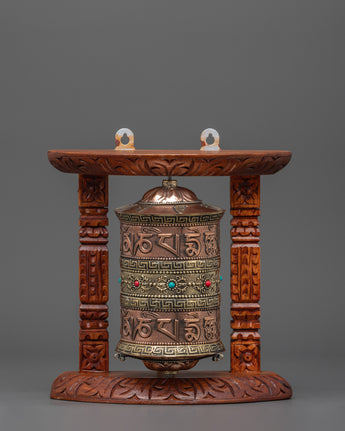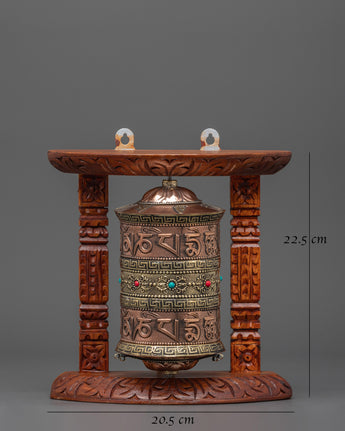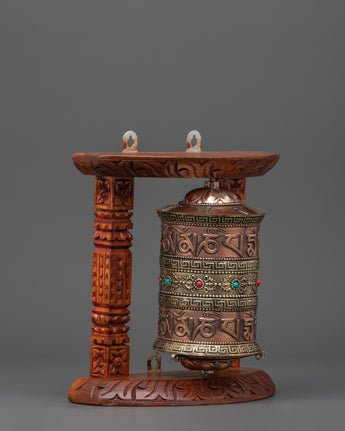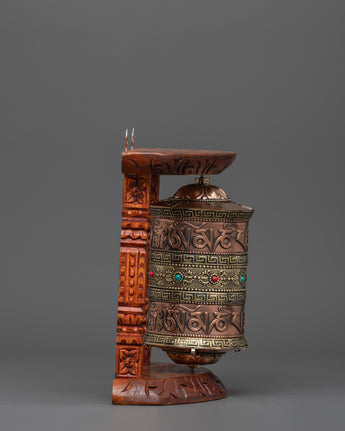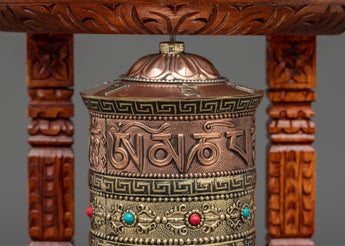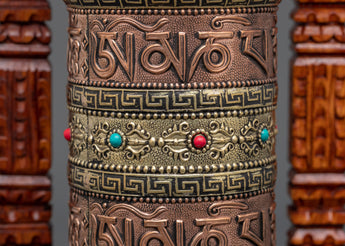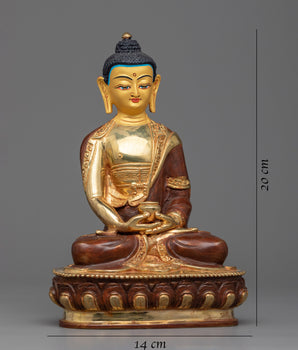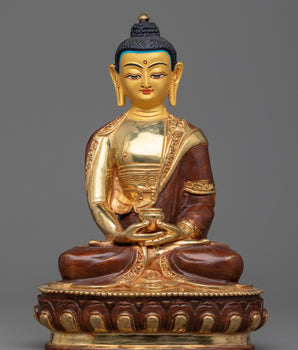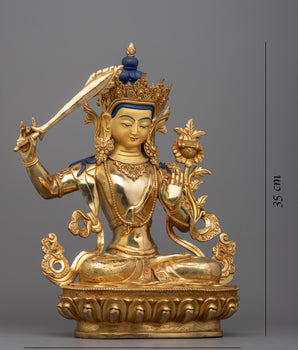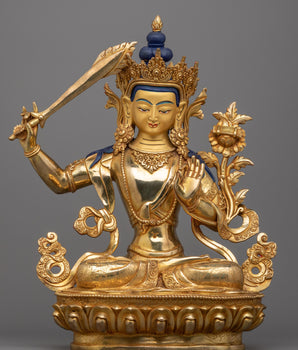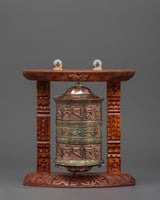
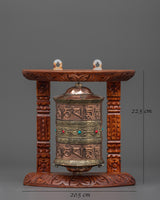
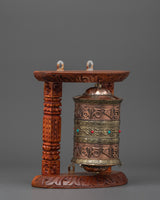

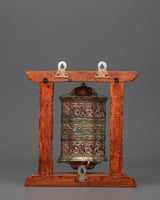
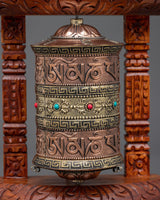
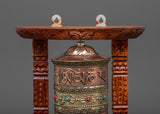
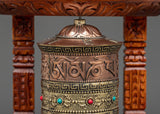
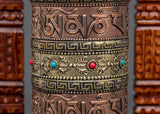
Handcrafted Ritual Prayer Wheel Decor | Meditation Decor for Sacred Spaces

100% AUTHENTIC

HANDMADE

FREE SHIPPING
Handcrafted Ritual Prayer Wheel Decor | Meditation and Mindfulness Gift
--------------------------------------------------------
Size: 22.5cm (Height) x 20.5cm (Width)
Weight: 0.70kg
Materials: Copper Body, Brass Body, White Metal, Wooden Body
--------------------------------------------------------
About our Prayer Wheel
This finely handcrafted Tibetan prayer wheel measures 22.5cm in height, 20.5cm in width, and weighs 0.70kg. It has a finely engraved copper and brass cylinder with the sacred mantra "Om Mani Padme Hum," surrounded by artificial stones. Supported by a carved wooden frame, the artwork combines traditional beauty with spiritual depth, making it an ideal addition to home altars, meditation rooms, or thoughtful gifts.
The prayer wheel is a sacred spiritual instrument in Tibetan Buddhism, thought to produce merit and cleanse negative karma with each round. The cylinder contains spiritual writings, allowing believers to reap the benefits of chanting merely by spinning it. The use of brass and white metal components improves both visual appeal and spiritual resonance, resulting in a substantial energy presence.
Introduction to Prayer Wheel
A prayer wheel is cylindrical on a spindle and is used in Tibetan Buddhism. It is typically inscribed with the mantra "Om Mani Padme Hum" and rotated by hand as a form of spiritual practice and to accumulate merit. Spinning the wheel is believed to have the same spiritual benefits as verbally reciting the mantra. The use of prayer wheels is widespread in Tibetan Buddhism and has spread to other cultures.
How does the Buddhist Prayer Wheel benefit us?
The benefits associated with rotating the wheel are numerous. It promotes knowledge, compassion, and bodhicitta in the practitioner and improves siddhis (spiritual powers such as clairvoyance, precognition, etc.). The practitioner can repeat the mantra as often as possible while the wheel is rolling, maintaining a calm, meditative attitude. A Tibetan Buddhist tradition holds that after a practice session, one should dedicate any acquired merits to the benefit of all sentient beings. Then three times Om Ah Hum. This is usually among Tibetans after finishing any Buddhist practice, including the prayer wheel exercise.
How do you set up your own Buddhist Shrine?
• Find a clean, quiet, and uncluttered spot
• Set up an altar table and cover it with an altar cloth that calls to you
• Place your sacred item at the center


